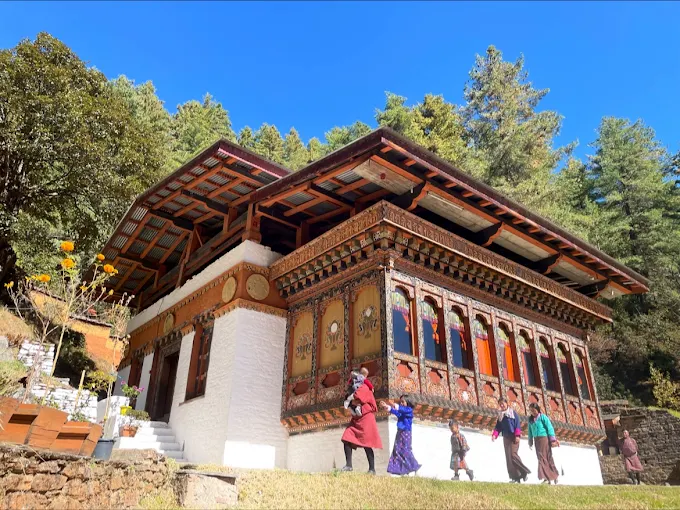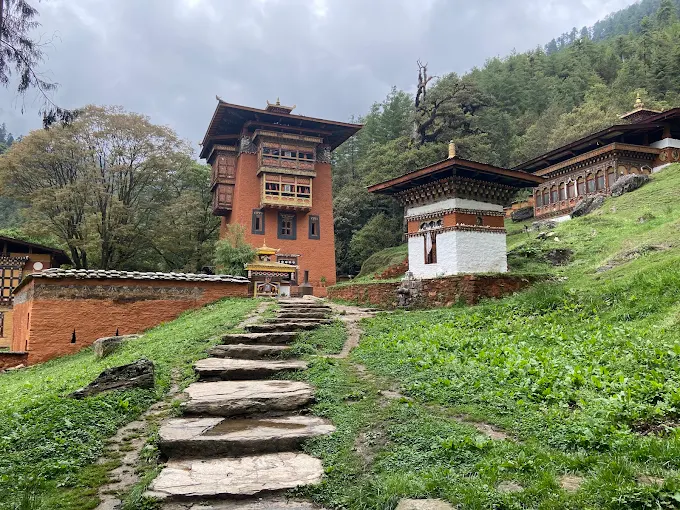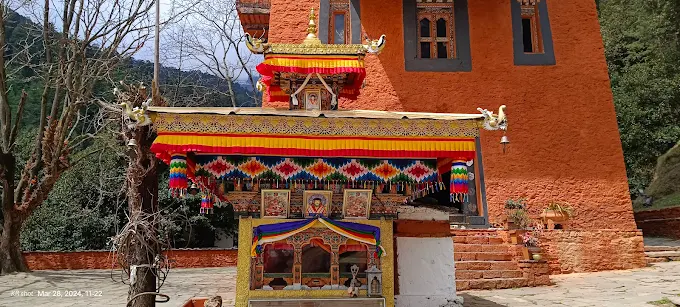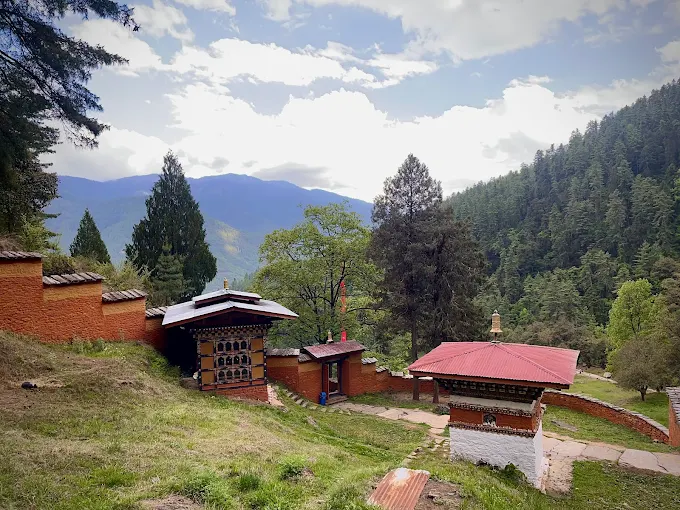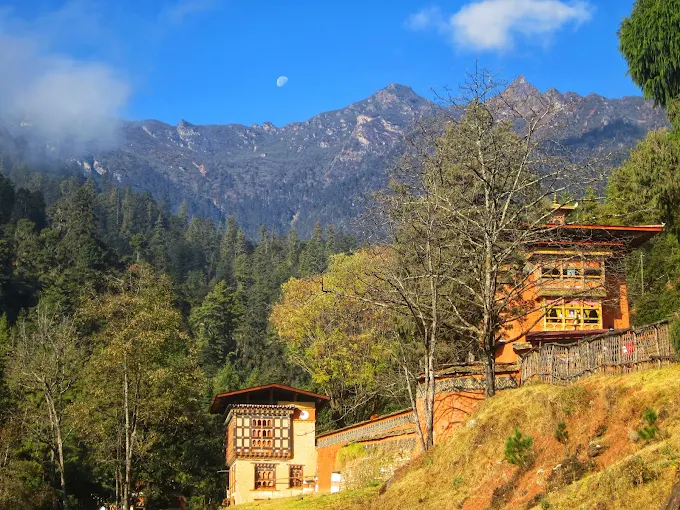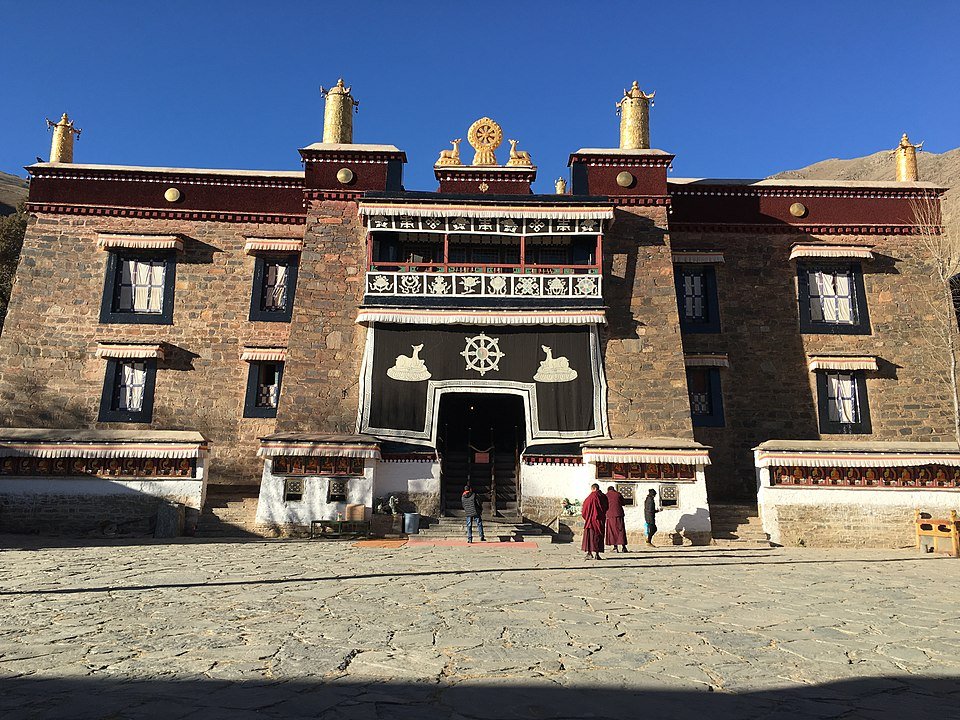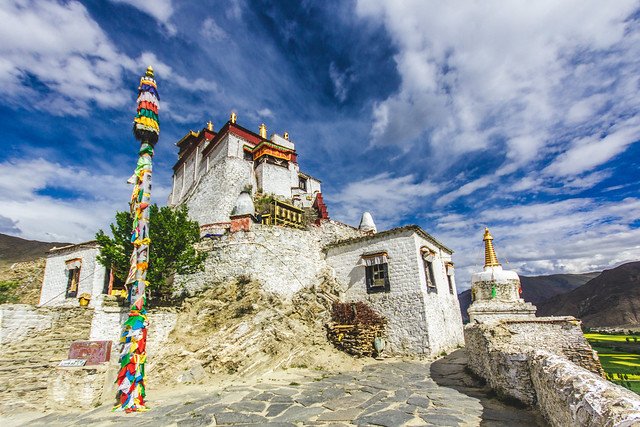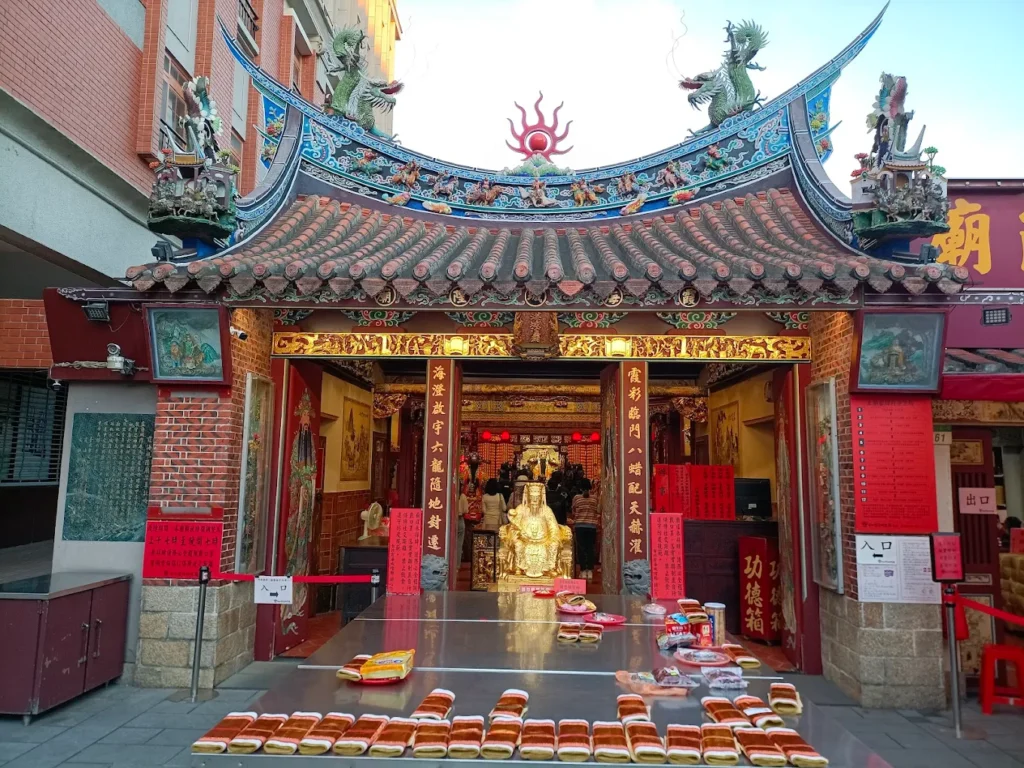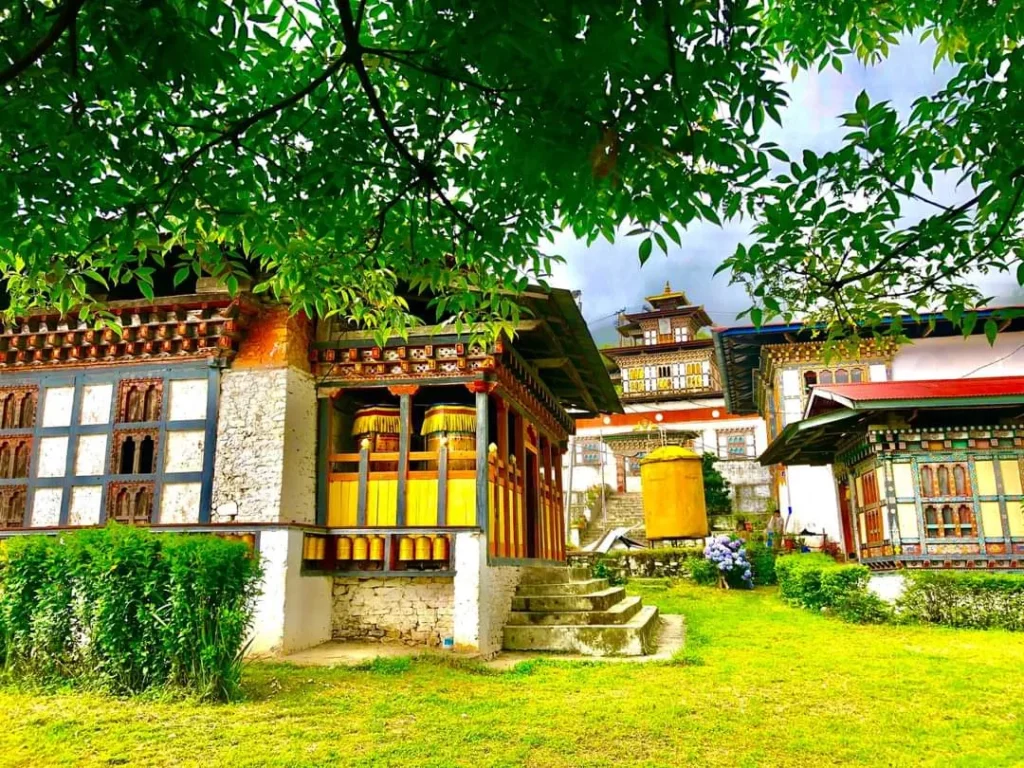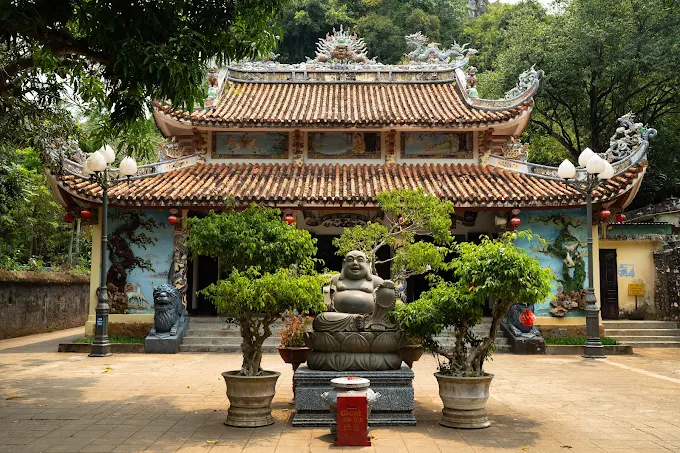Dechenphug Lhakhang: Fortified Sanctuary of Thimphu’s Kagyu Spirit
As dawn weaves through Thimphu Valley’s pine-clad hills, Dechenphug Lhakhang stirs near Kabesa, its fortified tower aglow on the western slope. Within the goenkhang, a bronze Geynyen Jagpa Melen, the warrior deity, stands fierce beside Guru Rinpoche, their altar framed by murals of swirling clouds, lit by butter lamps’ steady glow. On October 31, 2025, the Tshechu’s Zhana-Nga Cham dances pulse in the courtyard, masked performers embodying Drukpa Kagyu’s protective spirit under fluttering prayer flags. Founded in the 12th century by Dampa, son or grandson of Phajo Drugom Zhigpo, the lhakhang honors Geynyen, whose spirit sank into a stone named “Thimphu,” believed to return in Bhutan’s hour of need. Renovated in 1996–1998 under the 4th King, its tower, built by Kunga Singye, guards Thimphu’s faithful. Amid lush greenery, Dechenphug weaves devotion, myth, and Sharchop unity, offering a sanctuary where Bhutan’s Kagyu pulse thrives.
Overview and Significance
Dechenphug Lhakhang, a fortified Drukpa Kagyu stronghold on Thimphu’s western slope, stands as a sacred sentinel, its goenkhang tower embodying centuries of spiritual guardianship. Dedicated to Geynyen Jagpa Melen, it anchors Thimphu’s cultural and religious life.
Historical Roots and Legacy
In the 12th century, Dampa, a descendant of Phajo Drugom Zhigpo, who spread Drukpa Kagyu across Bhutan, founded Dechenphug Lhakhang on land tied to Geynyen Jagpa Melen, Thimphu’s warrior deity, since ancient times. Kunga Singye, the 7th Ralung abbot, built the fortified goenkhang tower, appointing Geynyen as the Drukpa Kagyu protector after subduing his spirit, which withdrew into a stone named “Thimphu,” meaning “Disappeared into the Stone.” Renovated from 1996 to 1998 under the 4th King Jigme Singye Wangchuk, the lhakhang expanded its courtyard to welcome growing pilgrims. Its legacy endures as a pilgrimage site, tied to Thimphu’s very name. Key milestones include:
- 12th-Century Founding: Dampa established the lhakhang, honoring Geynyen.
- Goenkhang Tower: Kunga Singye’s fortified chapel, housing protective deities.
- 1996–1998 Renovation: Modernized layout preserved original plan.
- Mythic Legacy: Geynyen’s stone promises Bhutan’s salvation.
Cultural and Spiritual Significance
The lhakhang’s fortified tower, a rare Drukpa Kagyu goenkhang, marks it as Thimphu’s spiritual heart, where locals seek Geynyen’s blessings before exams, journeys, or ventures. Its one-day Tshechu on October 31, 2025, open to foreigners, features sacred dances like Zhana-Nga Cham, honoring the deity’s protective power. The temple’s role in subduing Geynyen, whose spirit guards Thimphu, underscores its cultural weight, with legends tying it to Bhutan’s resilience. It draws hundreds daily, reinforcing Drukpa Kagyu’s influence in the capital. Significance includes:
- Drukpa Kagyu Hub: Upholds Mahamudra and protective rituals.
- Cultural Anchor: Tshechu unites Thimphu’s Sharchop community.
- Mythic Symbol: Geynyen’s stone names Thimphu, ensuring protection.
- Pilgrim Magnet: Draws locals for blessings, especially students.
Community and Global Connections
Dechenphug binds Thimphu’s Sharchop community through Tshechu and daily prayers, with villagers maintaining prayer wheels and organizing festivals. Its goenkhang, accessible only to Bhutanese except during Tshechu, fosters local devotion, as pilgrims seek Geynyen’s aid for new ventures. Regionally, it draws Drukpa Kagyu followers, while its 2003 Tshechu, initiated by the 4th King, captivates global visitors on October 31. Anecdotes highlight its impact:
- Local Devotion: Students pray before exams, seeking Geynyen’s favor.
- Festival Unity: Sharchop villagers host Tshechu, strengthening bonds.
- Global Appeal: Foreigners join the 2025 Tshechu, drawn by sacred dances.
- Mythic Resonance: Geynyen’s legend inspires Thimphu’s identity.
The lhakhang’s fortified tower and Geynyen’s myth set the stage for its architectural splendor, where sacred spaces mirror Drukpa Kagyu’s depth.
Architectural and Spiritual Features
Dechenphug Lhakhang’s tower-like goenkhang and vibrant murals rise on Thimphu’s western slope, blending Drukpa Kagyu fortitude with Bhutanese artistry. This section explores its design and sacred essence.
Iconic Design and Structures
At 2,500 meters near Kabesa, the lhakhang’s whitewashed stone walls form a fortified tower, its orange facade distinct amid Thimphu Valley’s pines. The goenkhang, built by Kunga Singye, centers the complex, housing Geynyen Jagpa Melen, with thick walls designed for protective deities. The 1996–1998 renovation expanded the courtyard, fringed by prayer flags, to accommodate pilgrims, preserving the 12th-century layout. Key structures include:
- Goenkhang Tower: Fortified chapel with orange exterior, housing Geynyen.
- Courtyard: Spacious, packed-earth space for Tshechu dances.
- Prayer Wheel Halls: Surround the tower, spun by devotees.
- Meditation Cells: Secluded rooms for Mahamudra practice.
Sacred Statues and Relics
The goenkhang’s altar hosts a fierce bronze Geynyen Jagpa Melen, depicted as Jagpa Melen (“Fire Fetching Brigand”), beside Guru Rinpoche, Chenresig, and Sakya Thukpa, their gold-inlaid forms glowing in dim light. Shakyamuni Buddha anchors side altars, while murals of protective deities adorn the tower’s walls. The “Thimphu” stone, where Geynyen’s spirit resides, is a revered relic, believed to hold Bhutan’s salvation. Key elements include:
- Geynyen Jagpa Melen: Central bronze statue, fierce protector.
- Guru Rinpoche: Honors Bhutan’s Buddhist founder.
- Thimphu Stone: Mythic relic tied to Thimphu’s name.
- Protective Murals: Depict Mahakala and other guardians.
Artistry and Environmental Harmony
Crafted with local stone and cedar, the goenkhang’s thick walls reflect Bhutanese fortification techniques, carved by Thimphu artisans with mantra inscriptions. Karma Ghadri murals, painted with mineral pigments, depict Drukpa Kagyu masters like Tsangpa Gyare amid lotus motifs, preserved against humidity since 1998. The tower’s hilltop perch, aligned with Thimphu’s pines, enhances its protective aura, tying it to the valley’s sacred landscape. Notable features include:
- Artisan Craft: Thimphu carpenters etched beams; painters restored murals.
- Environmental Ties: Hilltop aligns with Geynyen’s stone, subduing spirits.
- Preservation Efforts: Monks maintain murals post-1998 renovation.
- Symbolic Design: Lotus murals echo purity, distinct from rituals.
The lhakhang’s fortified spaces, from goenkhang to courtyard, cradle its rituals, inviting devotees into Drukpa Kagyu’s protective embrace.
Rituals and Practices
Dechenphug Lhakhang’s rituals, steeped in Drukpa Kagyu’s protective traditions, weave chant, offering, and festival into a vibrant spiritual tapestry. This section explores its ceremonial life, fostering Thimphu’s devotion.
Daily and Unique Rituals
Each dawn, caretakers chant Drukpa Kagyu sutras, their voices resonating in the goenkhang, as butter lamps illuminate Geynyen Jagpa Melen and Chenresig. Incense offerings, their sandalwood scent blending with cedar, honor Thimphu’s protector. Unique to the lhakhang, pilgrims offer prayers before exams or journeys, seeking Geynyen’s blessing to ward off obstacles, a practice tied to his mythic stone. Mahamudra meditation, held daily, guides devotees to clarity. Key practices include:
- Morning Chants: Daily Heart Sutra recitations, led by caretakers.
- Blessing Prayers: Pilgrims seek Geynyen’s protection for ventures.
- Incense Offerings: Daily rituals purify the goenkhang.
- Mahamudra Sessions: Meditations focus on mind’s nature.
Festival Traditions
The one-day Tshechu on October 31, 2025, transforms the courtyard with sacred cham dances like Zhana-Nga Cham, Genyen Kunchaam, and Nga Cham, performed by Royal Academy of Performing Arts artists, honoring Geynyen’s protective power. Initiated in 2003 by the 4th King, the festival draws hundreds, with monks reciting aspirations for Bhutan’s prosperity. Unlike daily rites, Tshechu’s vibrant costumes and cymbals create a festive pulse, open to foreigners. Highlights include:
- Tshechu Dances: Zhana-Nga Cham honors Geynyen, October 31, 2025.
- Monlam Prayers: Aspirations for peace, led by lamas.
- Losar Offerings: New Year butter lamps bless Thimphu.
- Communal Feasts: Sharchop villagers share rice post-festival.
Community and Visitor Engagement
Caretakers lead daily rites and guide pilgrims, sharing Geynyen’s legend, while Sharchop villagers organize Tshechu, weaving communal bonds through prayer wheel upkeep and festival labor. Foreigners can join the 2025 Tshechu, observing dances like Shazam Cham, or offer prayers outside the goenkhang, immersing in Kagyu’s protective pulse. Engagement includes:
- Visitor Prayers: Foreigners join Tshechu prayers, guided by monks.
- Festival Roles: Villagers prepare offerings, inviting observers.
- Guided Insights: Monks share Geynyen tales during Tshechu.
- Community Unity: Sharchop families host post-Tshechu gatherings.
The lhakhang’s rituals, vibrant with Kagyu tradition, invite exploration of its practical and cultural embrace, guiding visitors to Thimphu’s sacred heart.
Visitor Information
Dechenphug Lhakhang beckons travelers to Thimphu’s hills, offering practical guidance to engage with its fortified sanctity, from navigating its pine-lined path to immersing in its spiritual rhythm.
Navigating the Monastery
On Thimphu Valley’s western slope near Kabesa, the lhakhang lies 5–6 km north of Thimphu’s city center, a 15–20-minute drive via Norzim Lam and Thimphu-Phuentsholing Highway. From Thimphu, follow signs past Changlimithang Stadium, turning left toward the temple’s hilltop, marked by its orange tower and prayer flags. A 1–1.5-hour walk from central Thimphu offers scenic pine forests. Landmarks include the Thimphu Chhu and Druk Ralung Shedrup Choeling Monastery opposite. Tips include:
- Route: Drive north on Norzim Lam, turn left at highway signs.
- Landmarks: Orange tower and prayer flags signal the lhakhang.
- Walking Path: 5-km trail from Thimphu, scenic through pines.
- Orientation: Kabesa’s greenery frames the hilltop site.
Practical Details and Etiquette
The lhakhang’s address is Thimphu Valley, Kawang Gewog, Thimphu District, Bhutan, open daily from 9:00 AM to 6:00 PM, with access restricted to Bhutanese except during the October 31, 2025 Tshechu. Dress modestly, covering shoulders and knees; men only enter the goenkhang. Photography inside is prohibited. Transport includes taxis (15–20 minutes from Thimphu) or buses to Dechencholing (10–15-minute walk uphill). Details ensure a smooth visit:
- Address: Thimphu Valley, Kawang Gewog, Thimphu District, Bhutan.
- Hours: 9:00 AM–6:00 PM; foreigners enter only during Tshechu.
- Etiquette: No goenkhang photography; men-only access.
- Transport: Taxis (15–20 minutes); buses to Dechencholing, then walk.
- Accessibility: Flat courtyard; tower steps limit mobility.
- Safety: Thimphu is safe; carry water for walks.
Immersive Experiences and Surroundings
Visit on October 31, 2025, for the Tshechu’s Zhana-Nga Cham dances, where cymbals and horns create a vibrant pulse, or pray outside the goenkhang for Geynyen’s blessings. Nearby, Tashichho Dzong (6 km away) offers fortress grandeur, while the National Memorial Chorten (5 km away) invites serene reflection. Kabesa’s tea stalls serve butter tea, with views of Thimphu’s pines. Highlights include:
- Tshechu Dances: Join October 31, 2025, for sacred cham.
- Prayer Offerings: Seek Geynyen’s blessings outside the goenkhang.
- Nearby Sites: Visit Tashichho Dzong or Memorial Chorten.
- Local Flavor: Savor ema datshi at Kabesa stalls.
The lhakhang’s gates open to its Drukpa Kagyu philosophy, where Thimphu’s sacred wisdom unfolds in vibrant depth.
Cultural and Spiritual Insights
Dechenphug Lhakhang’s essence lies in its Drukpa Kagyu roots and Thimphu’s mythic spirit, offering profound insights into Bhutan’s spiritual and cultural depth.
Philosophical Foundations
Drukpa Kagyu’s Mahamudra meditation, guiding devotees to the mind’s clarity, anchors the lhakhang’s practices, with Geynyen Jagpa Melen’s protective role ensuring spiritual safety. The deity’s subjugation by Kunga Singye reflects Kagyu’s triumph over negative forces, aligning with compassion for all beings. These teachings shape daily chants and Tshechu dances, fostering liberation. Key elements include:
- Mahamudra: Insight into mind’s nature, practiced daily.
- Protective Deity: Geynyen guards Thimphu’s faithful.
- Compassion Focus: Kagyu’s altruistic ethos guides rituals.
Cultural and Symbolic Depth
The goenkhang’s orange tower, symbolizing Geynyen’s fiery protection, stands as a cultural icon, distinct from ritual torma. Murals of Tsangpa Gyare and lotus motifs signify purity, blending Bhutanese artistry with Tibetan Kagyu iconography. The “Thimphu” stone, naming the capital, embodies Bhutan’s resilience, promising Geynyen’s return. Symbolic highlights include:
- Orange Tower: Represents Geynyen’s protective might.
- Lotus Murals: Symbolize purity amid strife.
- Thimphu Stone: Names capital, tied to salvation myth.
Community and Environmental Resilience
The lhakhang strengthens Thimphu’s Sharchop community through Tshechu and prayer offerings, fostering unity. Villagers’ pine-planting around Kabesa reflects Bhutan’s eco-conscious ethos, tying the temple to Thimphu’s greenery. Stories of students seeking Geynyen’s blessings highlight resilience, with the 1996–1998 renovation showcasing communal devotion. Key aspects include:
- Community Bonds: Sharchop villagers organize Tshechu.
- Eco-Stewardship: Pine plantings honor environmental values.
- Cultural Resilience: Geynyen prayers inspire Thimphu’s youth.
These insights weave a vibrant reflection on the lhakhang’s enduring role, beckoning travelers to its sacred embrace.
Why You Have to Get to Dechenphug Lhakhang
Dechenphug Lhakhang beckons as a fortified sanctuary in Thimphu’s sacred valley, its orange goenkhang tower and Geynyen Jagpa Melen statue radiating Drukpa Kagyu’s protective might. The October 31, 2025 Tshechu’s Zhana-Nga Cham dances, vibrant with cymbals, pulse with devotion, inviting foreigners to witness Thimphu’s spiritual heart, where prayer flags flutter over pine-clad hills. Built by Dampa in the 12th century, its “Thimphu” stone, naming the capital, promises Bhutan’s salvation, binding Sharchop villagers in faith. From Mahamudra’s meditative calm to Geynyen’s mythic guardianship, it offers a rare glimpse into Kagyu’s living heritage. Travelers are invited to stand where chants echo and pines whisper, unveiling Thimphu’s timeless devotion.
